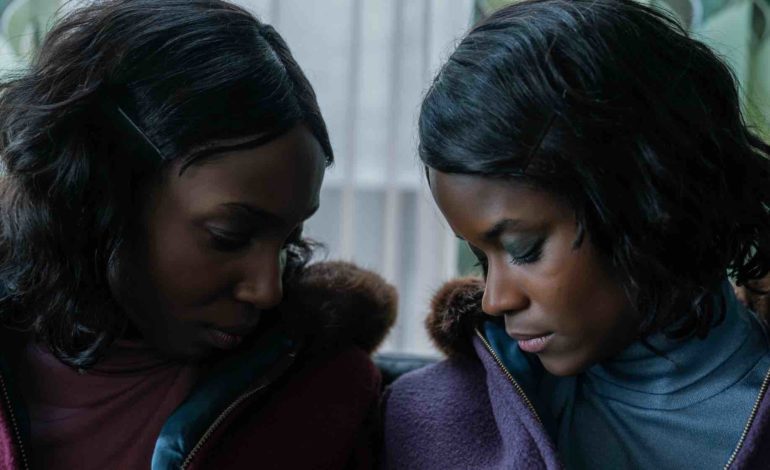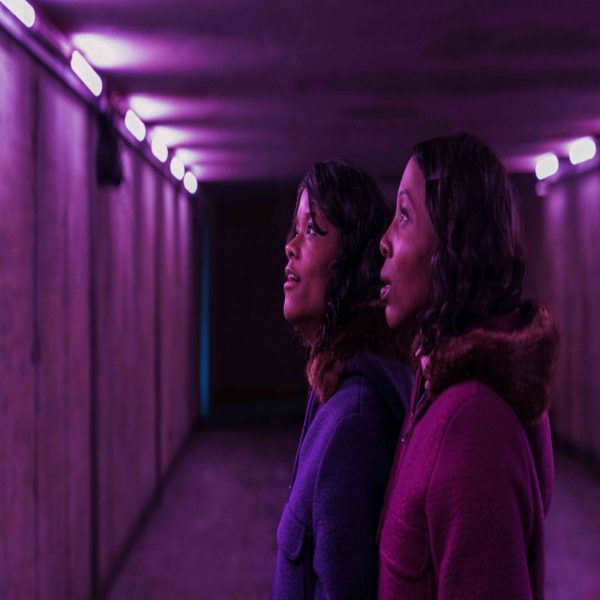

Films based on reality, in particular the biopic, are a tricky subject. The recent influx of music biopics (Elvis, Bohemian Rhapsody, Rocketman, etc.) have provided the viewer with their own set of expectations. For instance, artistic vision, it seems, does not require that the exact truth be told, but media literacy rates in the misinformation age may beg to differ. At the crux of this argument is The Silent Twins.
The Silent Twins is a film (based on a book of the same name) about two sisters named June Gibbons (Letita Wright) and Jennifer Gibbons (Tamara Lawrence) who refuse to speak in public, and eventually turn to delinquency. Despite their peculiar behaviors, the sisters are prolific creatives and have a deep connection to each other. The twins existed in real life, and the film attempts to portray their lives, but in this case, attempts is a keyword.
Interestingly, the film doesn’t seem to know what to do with its protagonists, which is ironic given the nature of the story – nobody else seemed to know what to do with the twins either. The final sequence of the film features a swooping dance sequence, in which the camera eventually flies upwards and focuses on two gleaming stars in the night sky, while a song about togetherness plays in the background and through the credits. If the viewer were to watch only this scene, they might think that the film’s thesis was about the power of sisterhood, and the like.


(L to R) Letitia Wright stars as June Gibbons and Tamara Lawrance stars as Jennifer Gibbons in director Agnieszka Smoczynska’s THE SILENT TWINS, a Focus Features release. Credit: Courtesy of Lukasz Bak/Focus Features
Instead, the film puts the girls in an awkward position, condemning their behavior and driving a wedge between audience and character. Condemning bad or anti-social behavior is not a cinematic sin, but given the ending of the film, it seems a peculiar and alienating choice. The twins are eventually committed to a mental hospital, and the tone of the film suggests pity. The sky is dark and grainy, the courtroom audience erupts in dismay at the length of the sentence, sad music plays. But despite the heavy handed emotional direction, it doesn’t seem like the worst place in the world for individuals who have adopted behaviors like the ones portrayed in the film. The viewer is left with questions. What happened when the twins got separated a boarding school? Why did they take a vow of silence when they can speak? Why do they keep fighting? Is the connection they have actually supernatural? These questions are pervasive, at least, until the viewer conducts a simple google search.
Therein lies the major weakness of The Silent Twins. It seems as though the Gibbons twins were decent, creative women who struggled in life due to some communication issues in their youth, their race, gender, class, and probably other things. Even something as reachable as the Wikipedia page tells the viewer as much. Too much exposition can be a curse in biopics, but this film would have benefitted from explaining the Gibbons’ plight at least a little bit. It may be necessary to skip over someone like, say, Elvis, who’s story and image are quite well known, but these sisters, though talented, are far from Elvis status in popular culture.
Taking a more artful portrayal of famous figures often works. Take Sofia Coppola’s Marie Antionette for instance. Coppola makes it clear that hers is an interpretation of the life of a famous woman, meant to represent themes the public can draw from her personal life, rather than a historical document. It seems as though this was the direction The Silent Twins decided to take, but ultimately failed to do so. The production design is beautiful, but the multiple mixed media sequences feel a bit out of place. Other scenes meant to represent the twins’ connection to one another are puzzlingly placed, to the point that the viewer has difficulty understanding the story the film means to convey.
Score: 1.5/5
Ultimately, the story of The Silent Twins is an interesting, and potentially important one. In many areas, a valiant effort was made in attempting to tell their story. Unfortunately, the cinematic biopic fails to tell their story in a way that actually means something. The biopic has always been a hard case to crack, and it doesn’t seem as though we’re getting any closer here.
